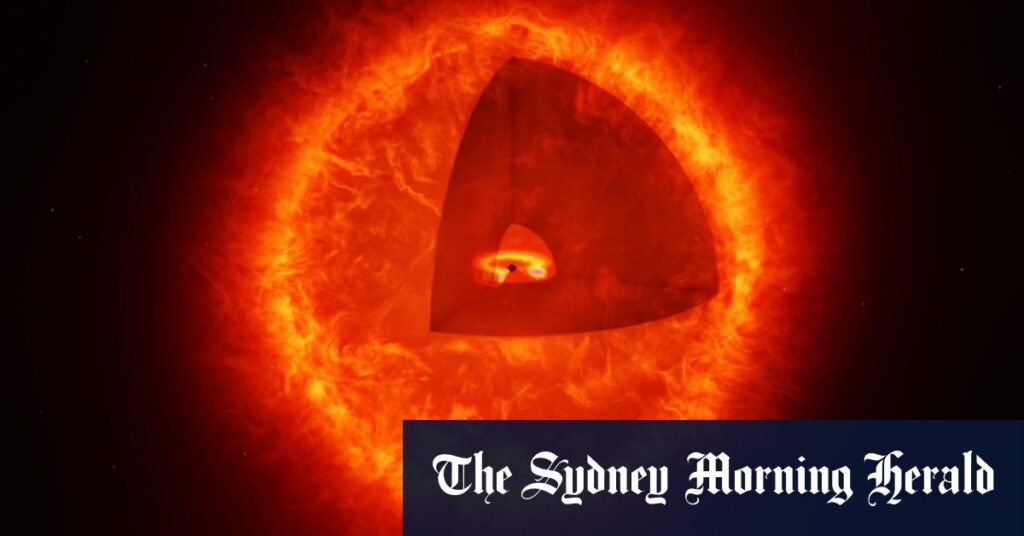A collection of Little Red Dots, as imaged by the James Webb Space Telescope.Credit: NASA, ESA, CSA, STScI, and D. Kocevski (Colby U.)
“The discovery was a complete fluke,” says Karl Glazebrook, a distinguished professor of astronomy at Swinburne. These days, many new astronomical discoveries are made by computer analysis of images. Not these. “We just discovered them by looking at images and going ‘What the heck is that?’”
Nearly all the dots are ancient, just hundreds of millions of years younger than the Big Bang. Could they be small, old galaxies? They seemed far too powerful for that, emitting huge amounts of energy despite being a fraction the size of the Milky Way. It’s hard to work out how they could have formed so many stars so quickly.
To work out what they are looking at, astronomers split light from a source into its rainbow spectrum and look for any peaks or troughs; certain molecules are known to emit or block certain colours of light.
The little red dots were emitting infrared light and ultraviolet light, and almost nothing else. Other evidence from the spectra suggested the presence of various gases moving at very high speeds.
“The signature of the energy distribution looked like nothing we’d ever seen before,” says Glazebrook.
That led to one early theory: a super-massive black hole eating a gas cloud. As the hole sucks in the gas, it can spin at extreme speed and emit light. But these objects typically emit bursts of X-ray light, and the little red dots do not.
Loading
Bright light, gas moving at extreme speeds, no X-ray bursts – the picture was difficult to explain with known objects. So earlier this year, astronomers suggested a new one: a black hole star. “Sort of like a giant star with a black hole in the centre. And temperature of 10,000 Kelvin,” says Glazebrook. “That’s emerging as the favourite theory.”
“What it behaves like is a thick atmosphere of gas – thick like the surface of a star – surrounding the black hole.”
Large black holes typically sit at the centre of galaxies (there is one at the heart of the Milky Way, happily gobbling up stars). A black hole star would replace all the stars with a vast cloud of gas, moving so quickly it does not have a chance to collapse into stars. An aborted galaxy. Gas is known to absorb X-ray light effectively.
How a gas cloud could hang stable around a black hole is not clear. Perhaps the heat generated by the black hole might prop up the gas cloud, which in turn would hide many of the emissions we normally see from a black hole. The gas cloud itself might glow from the warmth of the black hole, like a star itself.
“How can they be stable? I don’t know,” says Glazebrook. “We don’t know how they form.”
One idea: a decades-old theory of “quasi-stars”, which suggests the early universe was full of super-giant stars much larger than those we see today. Eventually, they collapsed – into a black hole surrounded by a huge gas cloud. The existence of little red dots seems to revive that idea.
But for now, that all remains speculation.
“We still don’t understand what these things are,” says Davies. “We still don’t really understand what we’re looking at.”
Their existence tells us two things, she says: strange things were going on in the early universe, and we still have an awful lot to learn.
“These little red dots suggest there are a lot more growing black holes out there in the early universe than we had previously discovered.”
The Examine newsletter explains and analyses science with a rigorous focus on the evidence. Sign up to get it each week.
Read the full article here

















